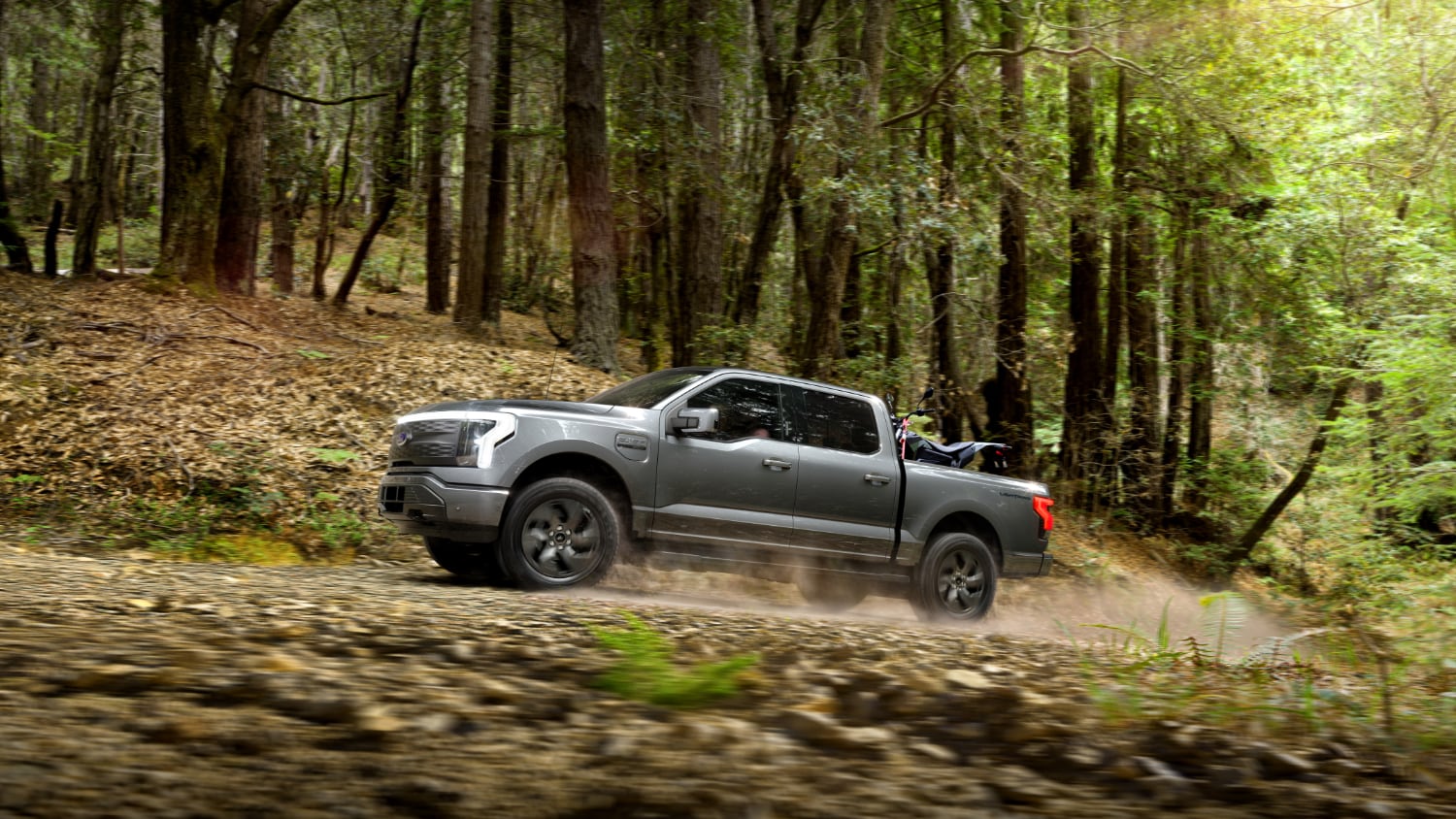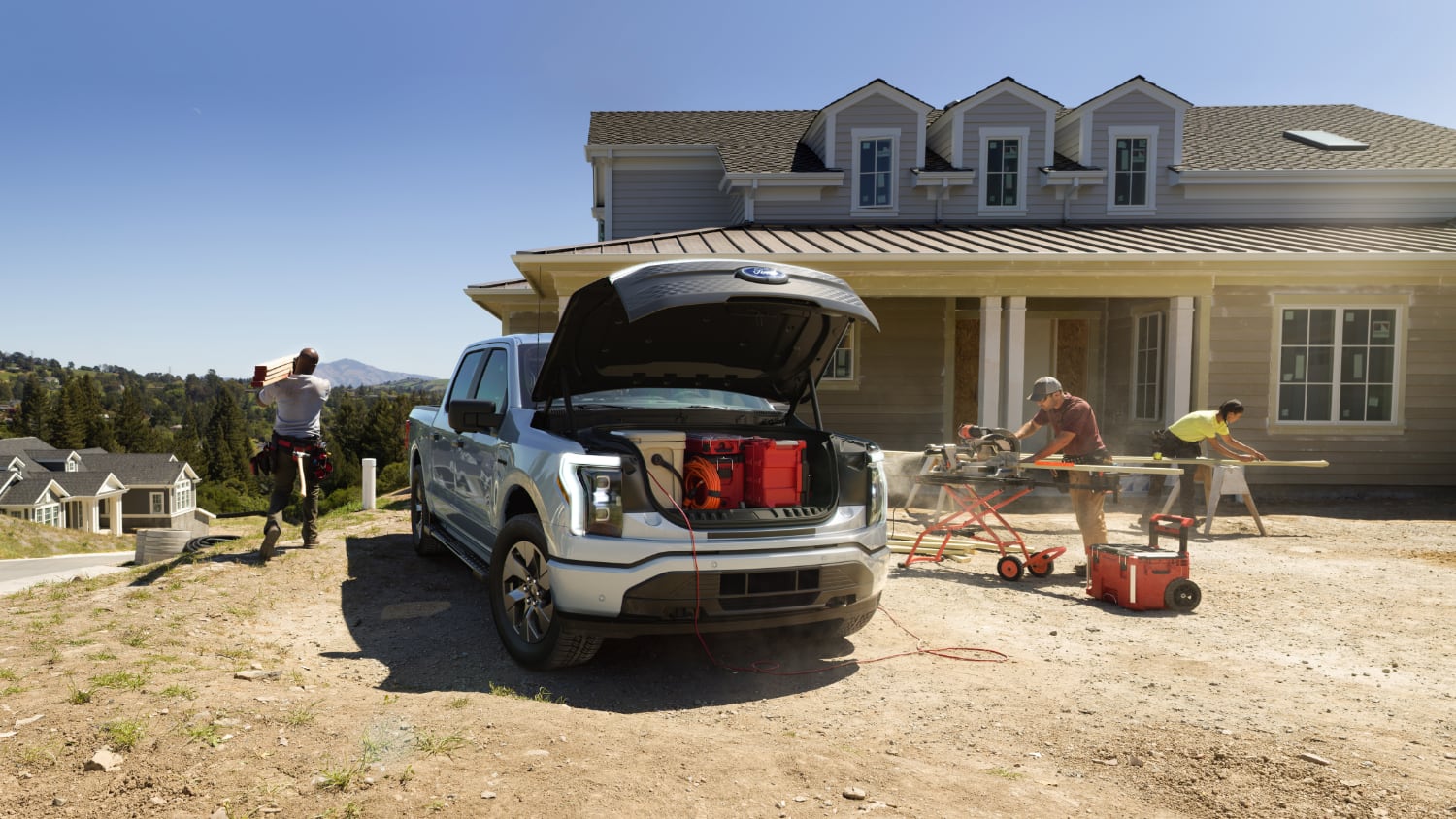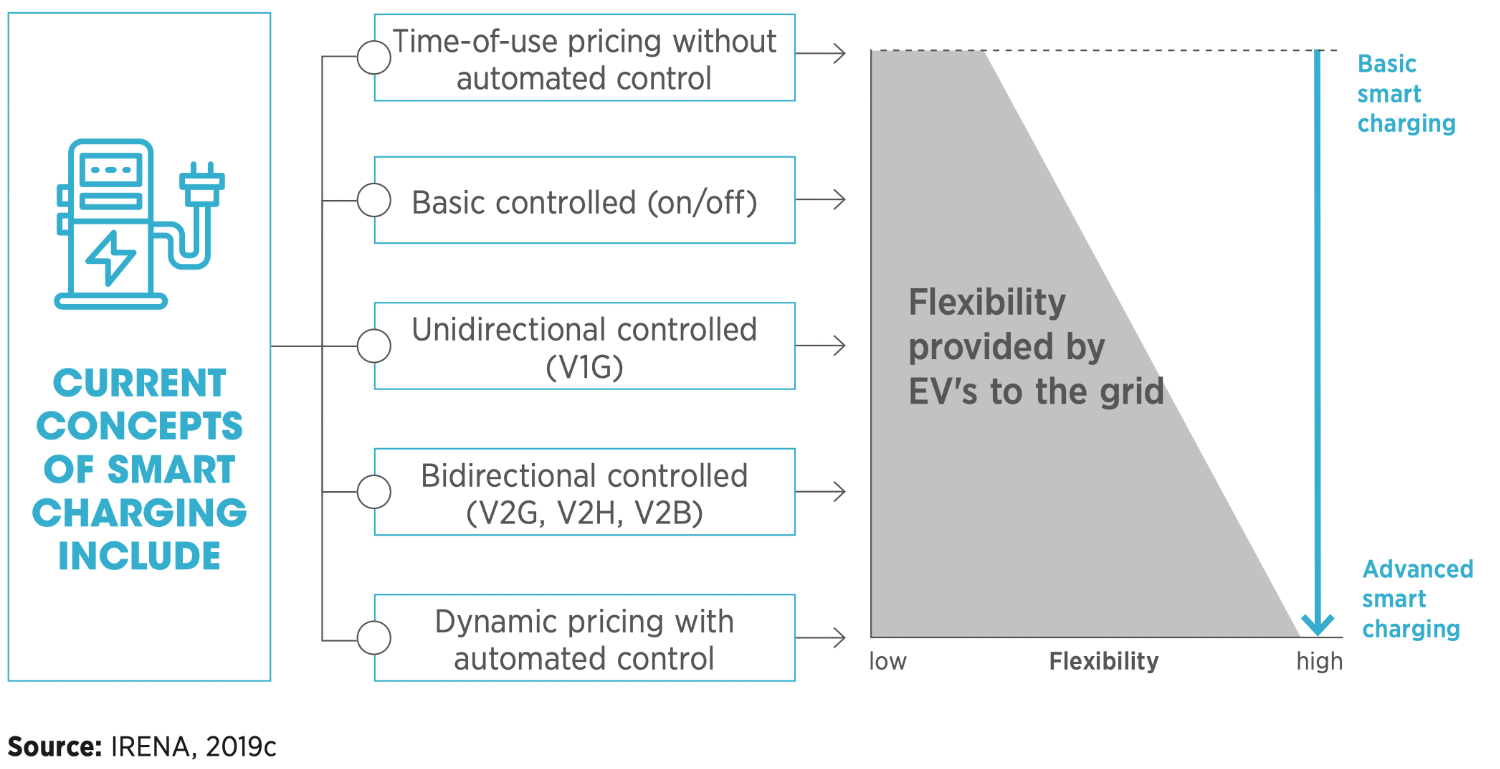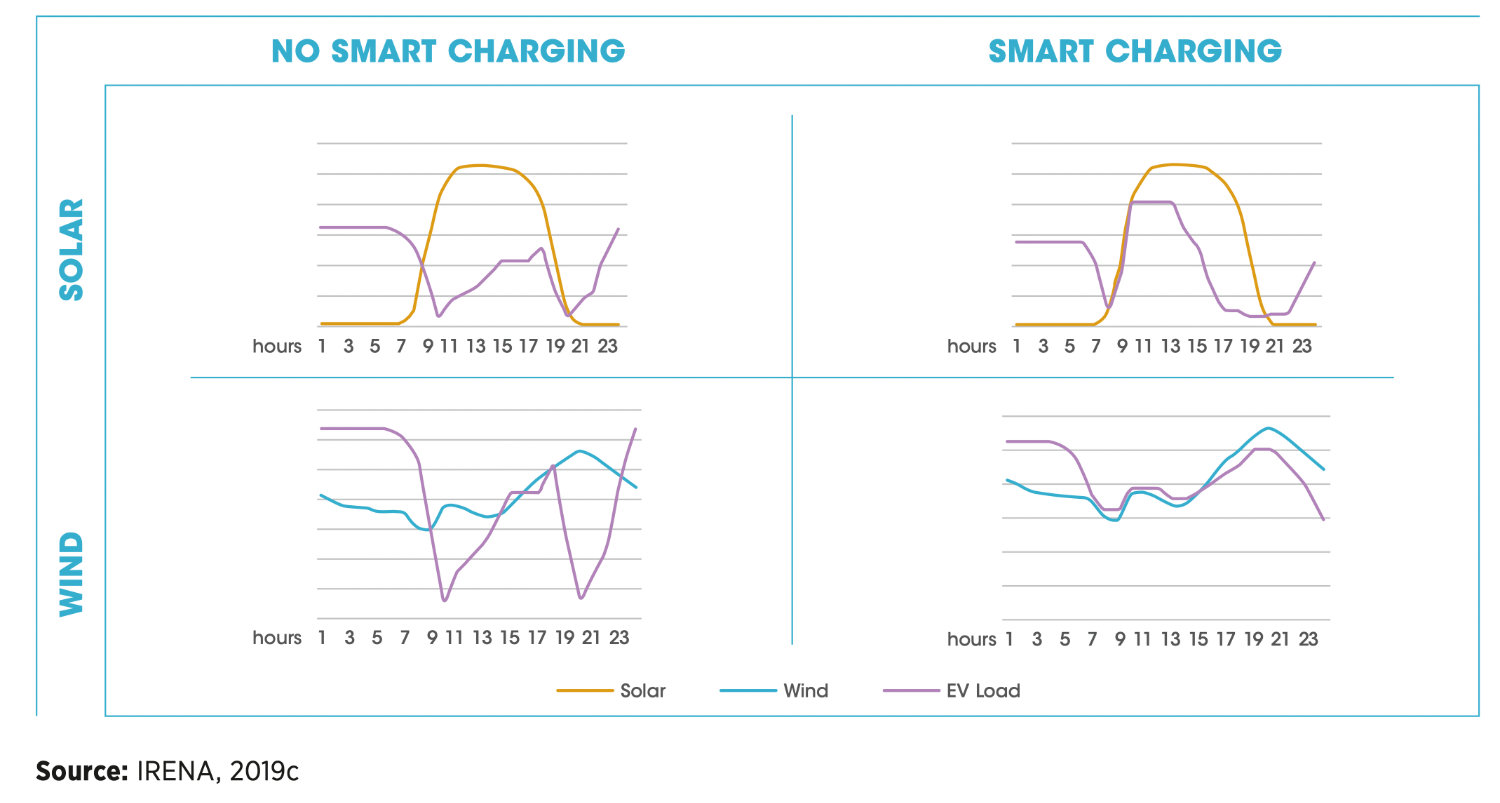Backup power for grid outages! The Ford F150 Lightning is our EV of the month for September 2022
There are two reasons we chose this month’s EV of the month. First, with the energy crisis in Europe unfolding, grid stability is on everyone’s mind. Here, EVs with backup power functionality (V2G, vehicle to grid, or V2H, vehicle-to-home) can play an important role in stabilizing the grid. Secondly, while we covered EVs of all sizes and forms, we have not yet had a pickup truck as our EV of the month. So, without further ado, the Ford F150 Lightning: a truck with great V2H support.

F150 Lightning - the specs
The Ford F-series of pickup trucks was the top selling car in the United States in 2021. Hence, its electric variant, the F150 Lightning announced in April of this year, could become one of the top selling EVs in the United States.
The F-150 Lightning is available with two battery pack options: the standard range pack with 98 kWh of energy, and the extended range pack with 131 kWh (making it one of the largest packs available on the market).
As the vehicle is not yet available in Europe, we can’t (yet) report any real-world range test data by our favorite tester Bjørn Nyland. Luckily, InsideEVs reported on a 70mph test, which sits somewhere in between Bjørn’s 90 and 120 km/h tests. They tested as follows:
- The F-150 Lightning with the extended range battery: 435km (270 miles) at 70 mph.
- The F-150 Lightning Pro with standard range battery: 344 km (214 miles) at 70 mph.
The official EPA highway range ratings are 455 km (283 miles) and 324km (201.6 miles) for the extended and standard range packs, respectively.
The F-150 lightning is packed with some interesting features:
- Onboard power for tools and other equipment (Power-to-load, P2L)
- The so-called “Mega Power Frunk”. The compartment adds 400 liters of storage space and has power outlets and USB plugs, to boot. In a truck which doesn’t have a regular lockable trunk, having a lockable frunk is particularly valuable. Especially if it is as big as many regular trunks.
- Plug and charge - no need to start the fast charging session from your app or swipe credit card.
- Vehicles equipped with Pro Power Onboard can also help out other stranded EV drivers through a 240 V outlet.
- Most importantly, intelligent backup power

Using electric cars’ batteries can help power critical devices or your home in power outages. If combined with an intelligent system, there is also an option to provide backup capacity to the grid. We’ll explore these technologies below.
The role of V2H and V2L to handle power outages for households
The ability to power devices from your car’s battery (often through standard 110 or 240 volt outlets installed in the vehicle) is called vehicle-to-load (V2L). The ability to power a whole house, is called vehicle-to-home (V2H).
The Ford F150 lightning provides both V2L and V2H. As explained above, its battery can store up to 131kWh of energy for the highest trim models. Its ‘intelligent backup power’ branded V2H can deliver up to 9.6kW of power. This is enough to power lighting, a fridge, and even some other appliances. Electric stoves or a heat pump may push it beyond the 9.6kW. Given the capacity of 131 kWh a fully charged F150 could power a home for up to several days at lower load. For that to work, you need a special home charger installation, which supports powering the home in addition to charging your vehicle. The system is provided by Ford (in cooperation with Sunrun) and can be configured to switch to powering the home from the vehicle automatically in case of a grid outage. The promotional video below explains it all:
(For those interested in the deep details, technical installation info can als be found online.)
Vehicle-to-load can be useful for powering tools on a construction site, or providing power for lighting and more during camping trips. But it can also be used to provide backup power to individual critical devices in the home with just an extension cord. Recently, a case made the rounds where this approach was used to power medical equipment using a Rivian truck.
The role of V2G and smart charging for grid stability
Vehicle-to-grid (V2G) is essentially “the next level” after V2L and V2H. V2G allows feeding electricity back to the grid, much like solar panels or stationary home batteries do.
While discussing the benefits of V2G, we should look at it jointly with smart charging. Smart charging means that electric vehicles charge when it is most useful, for example when there is an abundance of green energy from wind and solar fed to the grid, more than can be consumed. In this situation EVs that are connected to the charger can start charging, providing a functionality sometimes called ‘peak shaving’. On top of that, V2G makes smart-charging bi-directional by adding the possibility to feedback back into the grid. This overview by IRENA illustrates it nicely:

With these functionalities, vehicle charging can follow the wind and solar production curves and provide electricity back to the grid in times of electricity shortages, assimilated here (also by IRENA.)

In contrast to popular belief, EVs are not necessarily an additional challenge for an electricity system of the future (with lots of wind and solar), but rather provide an important service and go hand-in-hand with the switch to a renewable grid.
Our EV of the month, the Ford F-150 Lightning, is not yet providing V2G (only V2L and V2H), but it is rumored that this functionality could be added in the future.
Some vehicles on the market supporting V2G already are:
- Nissan Leaf
- Mitsubishi Outlander
- VW ID models are supposed to be V2G capable even this year, but the exact timeline and features remain a bit unclear.
It’s clear that this is really exciting technology. While the F150 Lightning is not the most efficient/sustainable vehicle, we still believe it deserves to be our EV of the month because of its innovative features, V2H, and because it addresses an important customer demand in the USA.
To conclude, below are some video reviews of the F150 Lightning: